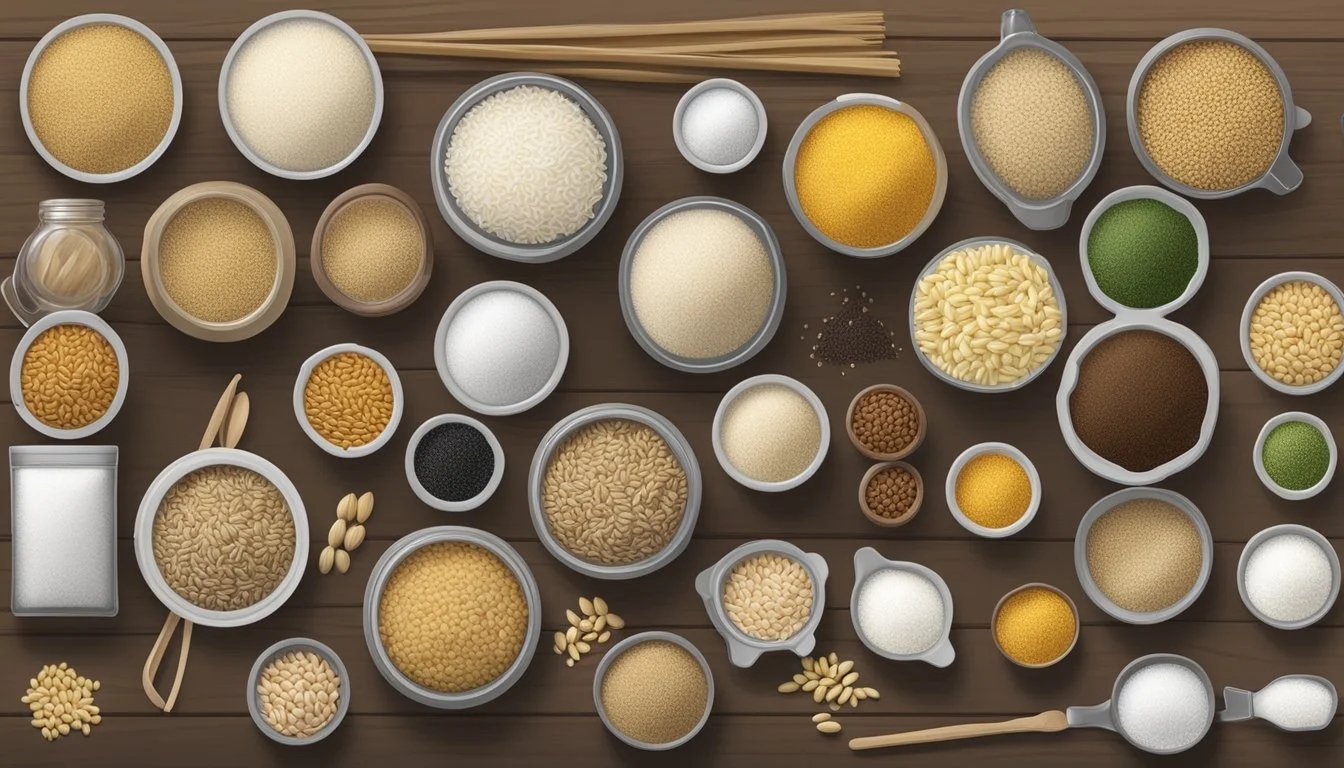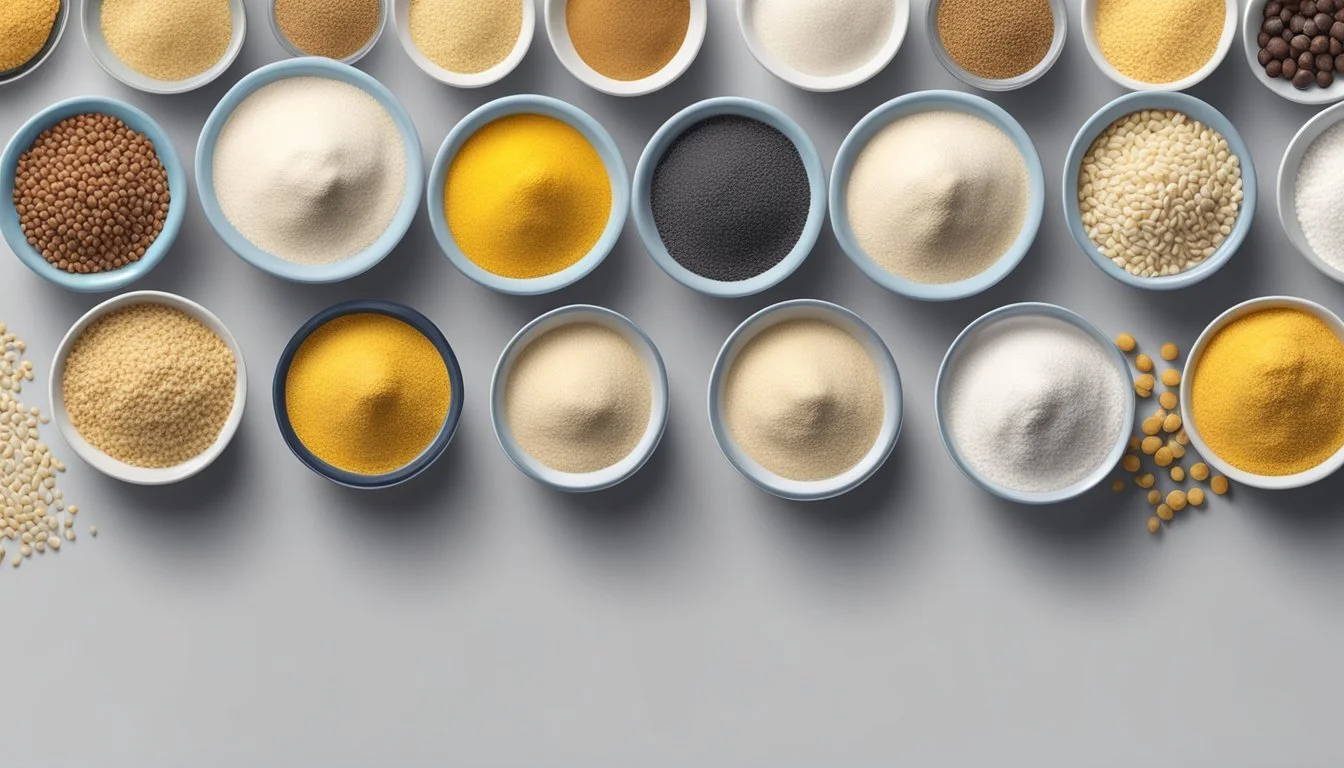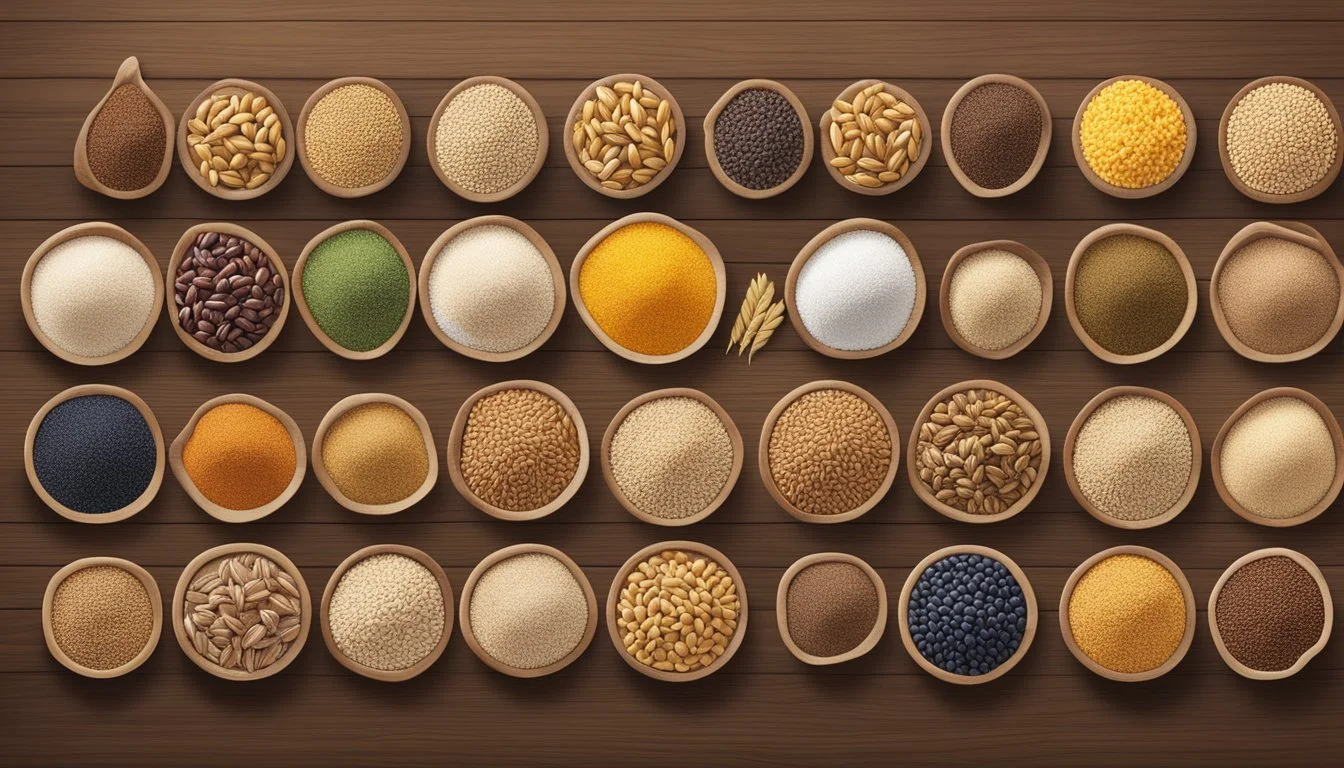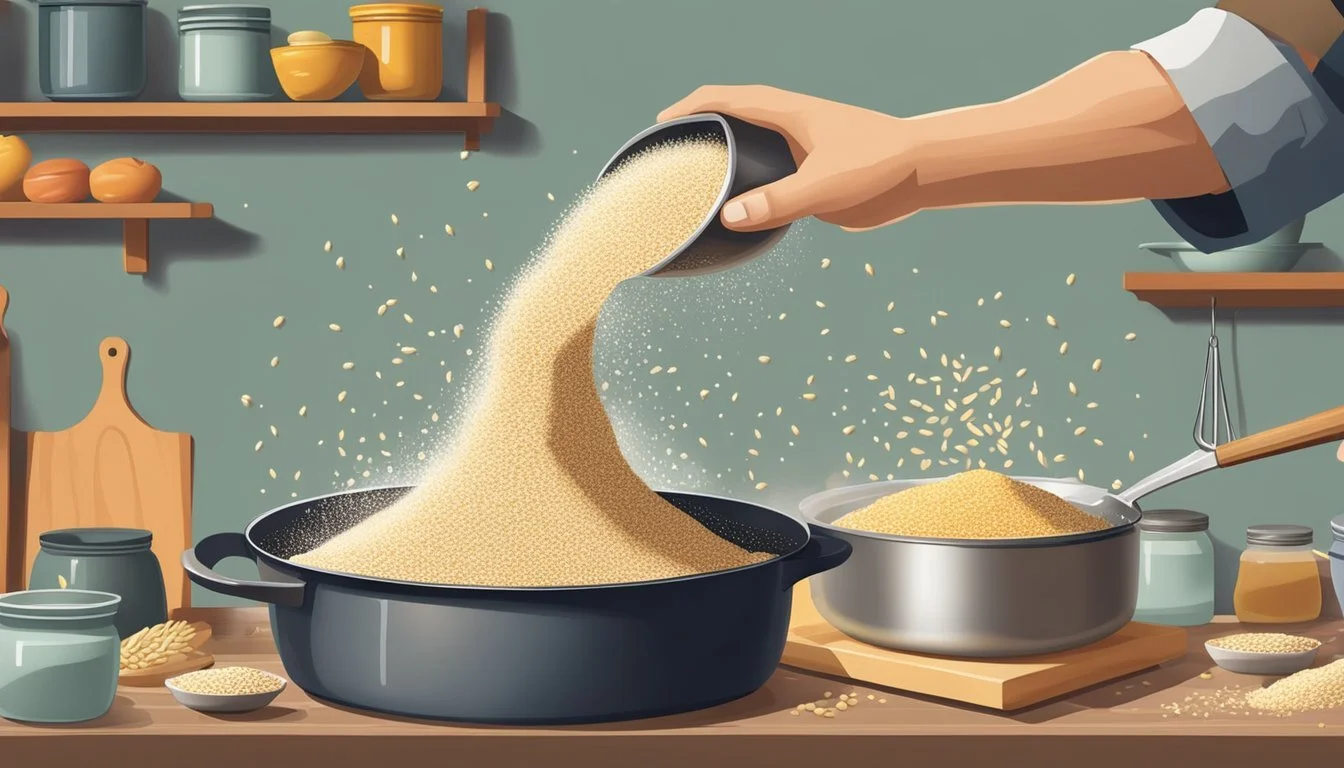Glutinous Rice Substitutes
Best Alternatives for Every Recipe
When you're in the midst of preparing a recipe that calls for glutinous rice and realize you're out, don't panic. There are several excellent substitutes that can mimic the sticky texture that makes glutinous rice so unique. One popular alternative is Calrose rice, a medium-grain variety from California. Although not traditionally sticky, its grains swell and soften during cooking, creating a texture similar to glutinous rice.
Another great option is sushi rice. Cooked with a water-to-rice ratio of 1.5:1, sushi rice can achieve that desirable stickiness, making it an ideal substitute. Brands like Nishiki offer high-quality sushi rice that can easily replace glutinous rice in various dishes.
Jasmine rice, known for its fragrant aroma, can also serve as a substitute, especially in Thai cuisine. While it has longer grains and a softer nature, it still provides a satisfactory stickiness when cooked properly. These substitutes ensure you won't miss out on your favorite dishes simply because you don't have glutinous rice on hand.
Understanding Glutinous Rice
Glutinous rice, commonly known as sticky rice, is a type of rice notable for its unique texture and culinary versatility. This rice variety is popular in many Asian cuisines.
Characteristics of Glutinous Rice
Glutinous rice is primarily composed of amylopectin, which is a type of starch that gives it a chewy texture. This characteristic makes it different from other types of rice, which contain a higher percentage of amylose.
When cooked, glutinous rice becomes very sticky and is often used in dishes requiring a cohesive, chewy texture, such as sushi or mochi. It is also known as sweet rice or sticky rice due to its slightly sweet flavor and its tendency to clump together.
Glutinous rice flour, derived from grinding glutinous rice, is used to thicken sauces and make baked goods. This flour is often referred to as sweet rice flour.
Main Substitutes for Glutinous Rice
Various substitutes can mimic the sticky and chewy texture of glutinous rice while catering to different cooking needs. The key options include specific types of rice and starch-based alternatives that are commonly available.
Types of Rice Substitutes
Jasmine Rice: Jasmine rice is a long-grain, fragrant rice with a soft texture. Though not as sticky as glutinous rice, it works well in dishes where a slight stickiness is acceptable. It also offers a neutral flavor that blends well with various ingredients.
Sushi Rice: Sushi rice is a short-grain rice known for its ability to hold together when cooked. The texture is quite sticky, similar to glutinous rice, making it an effective substitute in recipes requiring stickiness. Use a water-to-rice ratio of 1.5:1 for best results.
Calrose Rice: Calrose rice is a medium-grain rice originating from California. When cooked, the grains swell and become slightly sticky, making it a suitable substitute for glutinous rice. This rice is also relatively easy to find and inexpensive.
Arborio Rice: Arborio rice, commonly used in risotto, is short-grain and yields a creamy, chewy texture when cooked. Its high starch content helps mimic the sticky texture of glutinous rice in both sweet and savory dishes.
Starch-Based Substitutes
Tapioca Flour: Tapioca flour is extracted from cassava root and offers a high level of stickiness when cooked. It can replace glutinous rice flour in many recipes, especially in baking and thickening sauces.
Cornstarch: Cornstarch is another starch-based substitute that provides a smooth and slightly sticky texture. It is particularly useful for thickening soups, sauces, and gravies, but it's not ideal for dishes where the chewy texture of glutinous rice is crucial.
Potato Starch: Potato starch has a neutral flavor and good binding properties. It thickens soups and desserts well and can serve as a substitute for glutinous rice flour in some recipes. However, it does not offer the same chewy texture as glutinous rice.
Sorghum Flour: Sorghum flour is a gluten-free option that can act as a substitute for glutinous rice flour. It needs a bit more water to achieve the desired consistency. This flour is suitable for baking and creating chewy textures in gluten-free recipes.
Culinary Applications of Substitutes
Glutinous rice substitutes can seamlessly replace glutinous rice in both savory and sweet recipes. They maintain the texture and flavor profile suited for traditional dishes and desserts, providing versatile options for various culinary creations.
Savory Dish Alternatives
Medium-grain Calrose rice, favored for its ability to swell and soften, works well in savory dishes like fried rice and risotto. This rice absorbs flavors readily, making it ideal for dishes that rely on a sticky consistency.
Tapioca flour is another useful alternative in savory recipes such as steamed dumplings. Its sticky texture mimics that of glutinous rice flour, ensuring that dumplings hold together well while offering a satisfying chew.
Sushi rice can replace glutinous rice in sushi rolls. It achieves the needed stickiness when cooked with a 1:1.5 water ratio, providing the proper consistency. Nishiki sushi rice is an authentic option that works particularly well in these applications.
Dessert and Sweet Applications
Tapioca flour is a great substitute in sweet treats like rice pudding and mochi. Its ability to produce a chewy texture makes it perfect for desserts that traditionally use glutinous rice flour.
Another substitute, potato starch, can be used in recipes such as cakes and pancakes. It provides the desired consistency and helps in achieving the requisite fluffiness, especially in baking.
When making Asian desserts like sticky rice cakes, cornstarch can serve as a viable alternative. It not only thickens but also imparts a smooth texture, ensuring the final dessert is both cohesive and delightful.
Overall, these substitutes offer an effective way to replicate the desired textures and flavors in various recipes, ensuring that both savory dishes and sweet desserts can be enjoyed without compromising quality.
Specialty Substitutes
When looking for specialty substitutes for glutinous rice, it is critical to understand alternatives that are both gluten-free and nutritionally beneficial. Different substitutes offer unique textures and health benefits that can suit various dietary needs.
Gluten-Free Alternatives
Tapioca Flour: Made from cassava root, tapioca flour is an excellent gluten-free alternative. It offers a sticky texture similar to glutinous rice, making it ideal for baking and cooking. This flour is particularly effective in recipes for rice cakes or dumplings.
Potato Starch: Another gluten-free option, potato starch has similar binding properties to glutinous rice flour. It is often used in baked goods such as muffins, cakes, and cookies. Potato starch is also a healthier alternative as it contains no fat or cholesterol.
Sorghum Flour: Sorghum flour can replace glutinous rice flour on a 1:1 basis. Adding a bit more water is advised, as sorghum is less sticky. It's a nutritional powerhouse, high in protein and fiber, making it suitable for gluten-free baking and cooking.
Nutritional Substitutes
Brown Rice: Brown rice is a healthier substitute for glutinous rice due to its high fiber content. It helps in digestion and is known for its nutritional benefits. Although it lacks the sticky texture, this whole grain is ideal for those looking for a nutritious option.
White Rice: While not as nutritious as brown rice, white rice is easily digestible with a light and fluffy texture. It can serve as a substitute in many dishes, even though it doesn't provide the stickiness of glutinous rice.
Cornstarch: Cornstarch is commonly used as a thickener but can also be utilized as a substitute for glutinous rice flour in baking and other recipes. It is low in fiber, so it’s usually chosen more for texture rather than nutritional value.
Using these specialty substitutes can accommodate various dietary restrictions and preferences, providing alternatives that maintain the desired texture and offer beneficial health properties.
Preparation Tips for Substitutes
When preparing substitutes for glutinous rice, it's crucial to adjust the cooking techniques to achieve the desired sticky texture. Proper soaking, water ratios, and cooking methods are key to success.
Cooking Techniques
1. Sushi Rice:
Sushi rice can mimic the sticky texture of glutinous rice. It's important to rinse the rice several times to remove excess starch. Use a 1:1.5 water-to-rice ratio and let the rice soak for about 30 minutes before cooking. Cook as you would glutinous rice and allow it to steam for a few minutes after cooking for optimal stickiness.
2. Calrose Rice:
Calrose rice, a medium-grain variety, also serves as an effective substitute. Pre-soak Calrose rice for at least 20 minutes. Use a 1:1.25 water-to-rice ratio. This rice tends to swell and soften, creating a texture similar to glutinous rice. Cooking on low heat helps achieve the stickiness required for most recipes.
3. White Rice:
While not inherently sticky, white rice can be utilized with some adjustments. Choose short-grain white rice and soak it for 30 minutes. Use a 1:1.2 water-to-rice ratio for a slightly sticky texture. Cooking covered and allowing it to rest after cooking can enhance its consistency.
Table of water ratios and soaking times for different substitutes:
Rice Type Water Ratio Soaking Time Sushi Rice 1:1.5 30 minutes Calrose Rice 1:1.25 20 minutes White Rice 1:1.2 30 minutes
Proper adjustments in soaking times and water ratios are integral to achieving the ideal texture for your dishes.
Non-Rice Alternatives
Non-rice alternatives for glutinous rice can be divided broadly into starchy substitutions and flour-based substitutes. These options provide varying textures and flavors, making them suitable for different culinary applications.
Starchy Substitutions
Cauliflower rice is a popular low-carb substitute. It involves finely chopping or grating cauliflower until it resembles rice grains. This option is particularly appreciated for its low calorie content and health benefits.
Quinoa offers another starchy alternative. This protein-rich grain cooks quickly and is known for its nutrient density. It has a slightly nutty flavor that works well in various dishes.
Couscous, made from crushed durum wheat, serves as a versatile alternative. It cooks rapidly and has a texture that can mimic the mouthfeel of cooked rice. Couscous blends well with diverse recipes, absorbing flavors seamlessly.
Flour Based Substitutes
Glutinous rice flour, also known as sticky rice flour, provides a suitable texture for recipes requiring a sticky component. It is often used in Asian desserts and dumplings.
All-purpose flour can also be utilized in specific recipes. While it won't replicate the stickiness of glutinous rice, it can thicken soups and sauces, offering a similar consistency.
Another option is mochiko, a type of sweet rice flour. It is essential in making Japanese mochi and other sticky rice-based confections. This flour is highly valued for its fine texture and ability to create chewy, elastic doughs.
These alternatives offer diverse textures and flavors, making them useful in various culinary contexts.
Shopping Guide for Substitutes
Finding the right substitute for glutinous rice can be straightforward if you know where to look and what to buy. Here are some key tips to help you source these substitutes both locally and online.
Local and Online Availability
For those near an Asian grocery store, you can easily find options like sushi rice, Calrose rice, and tapioca flour. These stores often stock various rice types and flours, making it convenient to explore alternatives. Visiting these stores ensures you get authentic products often used in Asian dishes.
If local options are limited, online shopping offers a broader selection. Websites like Amazon or specialty online stores provide a variety of substitutes including mochiko flour, potato starch, and sorghum flour. Shopping online might be more expensive, but it guarantees access to versatile ingredients, even if they are not available in your local area.
For pantry staples, consider white rice for a versatile and easy-to-find substitute. It's widely available in most supermarkets, though it may lack the sticky texture.
Culinary Techniques and Considerations
Using substitutes for glutinous rice requires attention to texture, flavor, and recipe adjustments to achieve similar results in dishes. Understanding these aspects will help in creating delicious and satisfying meals.
Texture and Flavor Matching
Achieving the correct texture is key when substituting glutinous rice. Calrose rice, though not a short-grain variety, can swell and soften during cooking, resulting in a slightly sticky texture. This makes it a viable substitute in dishes requiring a sticky consistency.
Sushi rice is another excellent choice. Cooking it with a water-to-rice ratio of 1.5:1 can closely mimic glutinous rice's texture. Its higher starch content contributes to a similar creaminess, ideal for sushi and rice cakes.
For those looking to match the flavor profile, Mochiko flour can be used in place of glutinous rice flour for desserts like mochi. It maintains the necessary binding properties due to its comparable composition, ensuring chewy treats.
Adjustments in Recipes
When substituting glutinous rice with alternatives like white rice or Calrose rice, recipe adjustments are essential. White rice lacks the sticky quality and amylose content of glutinous rice, resulting in a different texture. To counter this, incorporating a thickening agent such as tapioca flour can help achieve the desired consistency.
For savory dishes and sauces, tapioca flour can act as a thickener, ensuring the dish retains the correct binding and thickening properties. Adjust water quantities based on the substitute's absorbency to maintain the correct moisture balance in the dish.
When using regular rice flour in place of glutinous rice flour, note that it may require additional binding agents. This ensures that the resulting texture remains cohesive and doesn't fall apart, particularly in baked goods and dumplings.





